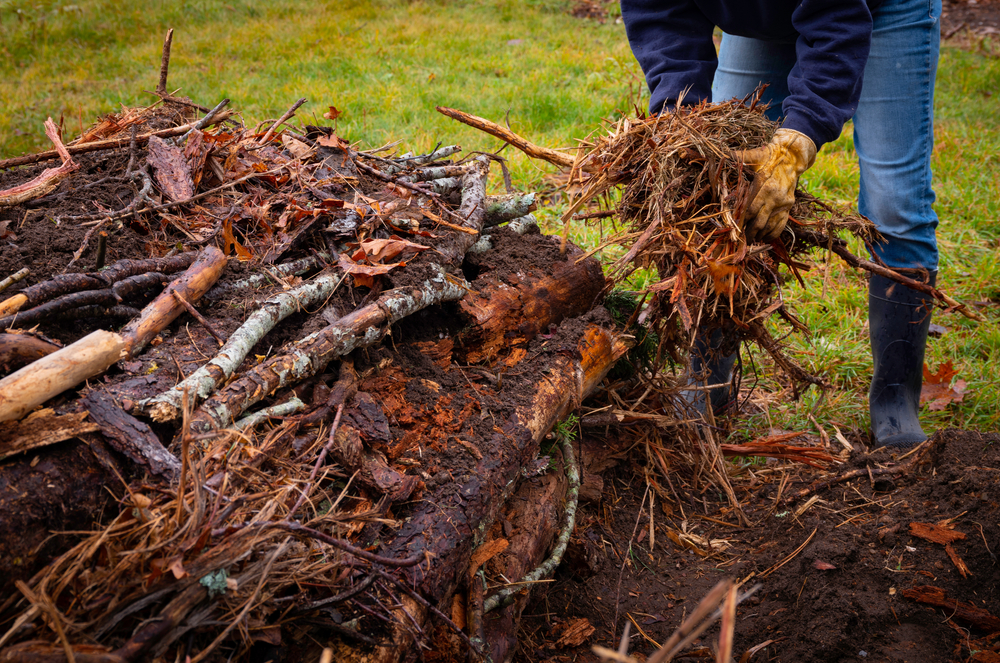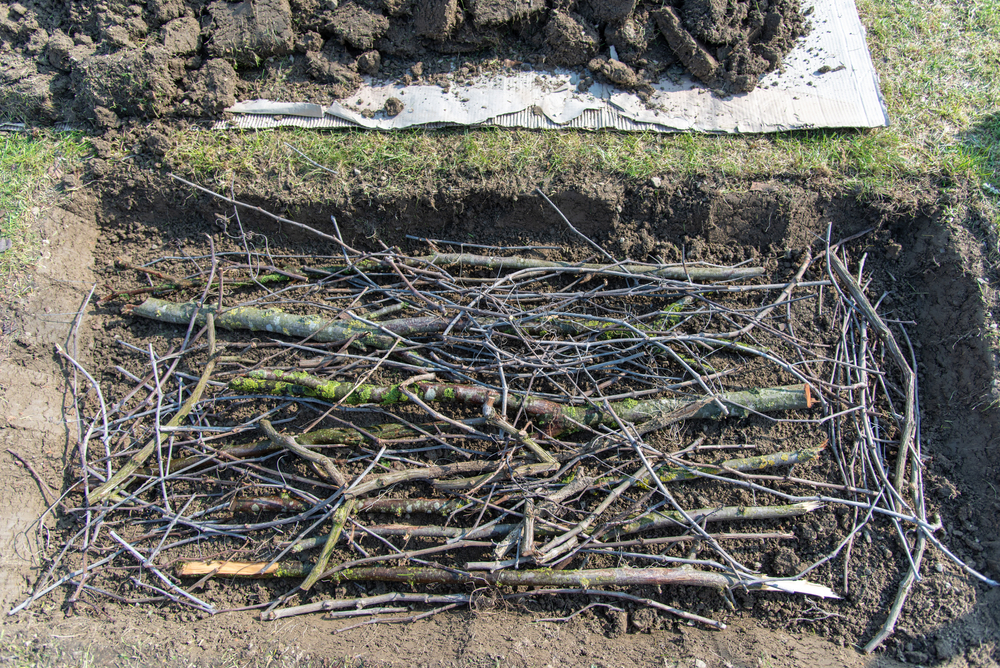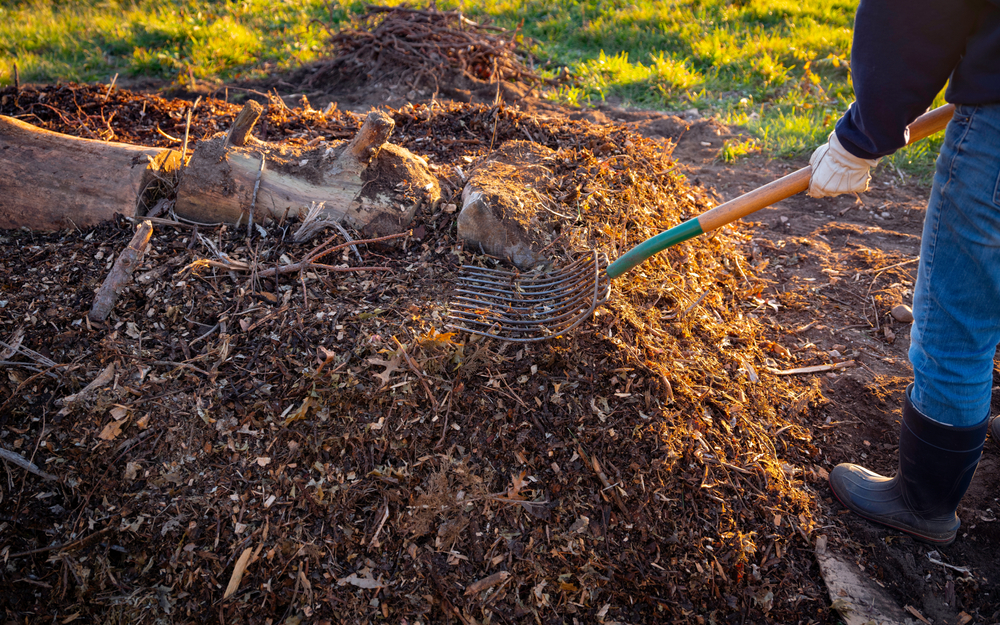Hügelkultur (pronounced hoo-gul-culture) is a traditional method of gardening that involves organic raised beds. It’s becoming popular for people interested in frugal, sustainable, and self-sufficient farming. Typical raised garden beds usually consist of a freestanding box filled with fresh soil. They usually have no bottom so plants can access the nutrients in the ground below. Hügelkultur beds follow the same method, but instead of tidy frames, they are made of rotten logs and plant debris.
What are Hügelkultur Beds?

Hügelkultur may seem appalling at first, but they are meant to imitate the water retention of a forest floor as part of a permaculture system. These low maintenance beds can be made of an assortment of organic items, and provide benefits such as better moisture retention, improved soil fertility, and extended growing seasons, explains How Stuff Works. Since the mound is raised above the ground, it can make gardening easier for people with back and joint pain. Plus, this method can be especially helpful in areas with limited water or poor soil quality.
The long-term goal of a hügelkultur bed is to create a sort of water reservoir to sustain the plants in it. It also adds a plethora of organic nutrients to the soil, says Epic Gardening. At the same time, it leads to less compaction and shrinkage compared to other raised beds, all while requiring less overall soil. Since you can use a wide-range of materials, from wood chips to scrap lumber to twigs, these beds can be extremely cheap to make.
However, hügelkultur beds aren’t for seasonal flower arrangements. They are a long-term investment, since the water retention benefits only begin once the inner logs rot, become absorbent, and share the water with the surrounding plants. Large logs can take years to break down enough. Secondly, hügelkultur can be the perfect solution for people in urban areas with plenty of free waste wood. However, many home gardeners may have to pay for materials such as log splitters and lumber. For example, some use pre-cut firewood, but this can be costly. And thirdly, hügelkultur beds are not as pretty as typical raised beds. They are intended for functionality over aesthetics.
Read More: 12 Survival Skills Your Great-Grandparents Knew (That Most Of Us Have Forgotten)
How to Build a Hügelkultur Bed

- First, choose the location. Look for a sunny area that’s about 8 by 4 feet.
- Remove grass and weeds until you have bare soil. To suppress the growth of more weeds, cover the ground with cardboard, newspaper, or wood chips, suggests the Old Farmer’s Almanac.
- Next, dig a shallow trench (but don’t get rid of the topsoil; you’ll need that soon.) It should be about 12 to 18 inches deep and level across the entire area. Do not make it wider than 4 feet across since you need to be able to reach the center without stepping on it.
- Optional: If you want make the bed taller, you can place a steel frame around the circumference of the trench. Alternatively, you can create walls with bricks, stones, or concrete blocks. You can use wood frames, but remember, they may decompose with the rest of the logs and need replacing. So use cedar or other types that are slow to decompose.
- Begin laying out the forestry debris, starting with the largest, like logs. (If you are using a frame, ensure the logs fill only about a third of the bed to ensure there’s at least eight inches of pure soil at the top. Then comes a layer of twigs and branches. (If your bed is shallow, use these instead of logs.)
- The upper layer could be almost any type of organic material like grass, grass clipping, turf placed root-side up.
- Pack the bed very tightly, making it about 2 to 3 feet high. Fill in cracks with manure, grass, and leaves.
- Remember to thoroughly water each layer.
- Finally, cover the bed with 2 to 3 inches of topsoil, followed by a layer of mulch.
- Add the plants, and place compost between them.
More Tips

Keep in mind, it’s best to build the mound in the fall and plant in the spring; this gives ample decomposition time. However, you can also plant immediately. Once the bed is ready, you can grow all sorts of edible and flowering plants. It’s commonly used for berry bushes, annual vegetable gardens, and native shrubs. You can even use small frames for miniature hügelkultur beds for herbs. Ideally, use pre-rotted logs that will decompose faster. Use a blend of hard and soft woods, such as maple, birch, oak, and poplar, according to Better Homes and Gardens. However, do not use materials from these trees:
- American elm
- Black locust
- Eucalyptus
- Goldenrod
- Manzanita
- Pepper tree
- Red oak
- Sugar maple
- sycamore
- Tree of heaven
- Walnut
Read More: Grounding (Earthing): What It Is and How to Do It

